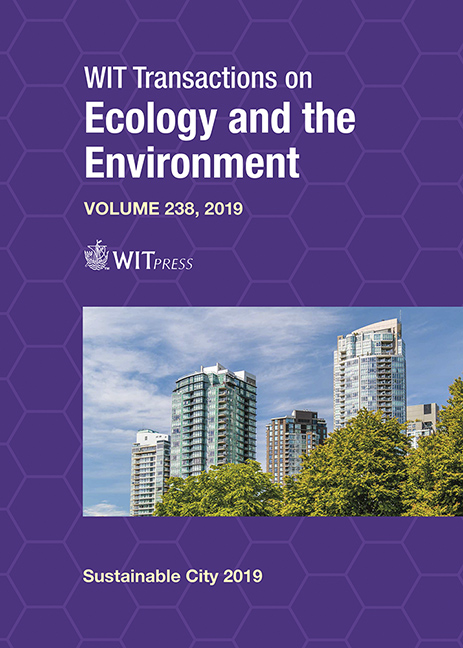COMPLEMENTARY APPROACHES TO ASSESS INDOOR AIR QUALITY IN URBAN ENVIRONMENTS
Price
Free (open access)
Transaction
Volume
238
Pages
12
Page Range
221 - 232
Published
2019
Paper DOI
10.2495/SC190201
Copyright
WIT Press
Author(s)
ANA PATRÍCIA FERNANDES, SANDRA RAFAEL, LUIS PITA CORREIA, CARLOS FARIA, TERESA NUNES, CARLOS BORREGO, MYRIAM LOPES, ANA ISABEL MIRANDA
Abstract
With the continuous improvement of life quality, indoor air quality (IAQ) has become an important issue in recent years. IAQ is affected by many factors including the type of indoor pollution sources, ventilation conditions, as well as indoor activities. Studies revealed that the outdoor environment is also an important factor that cannot be neglected for IAQ studies. The main objective of this work is to extend the knowledge of IAQ in the urban environment by using a numerical tool to calculate the pollutants concentrations inside an office room in a typical workday. For this purpose, two main approaches were used: (a) the CONTAM model, to characterize the IAQ in terms of carbon dioxide (CO2) concentrations; and (b) measurement data, by using reference equipments, to assess the accuracy of the results provided by the model. The Portuguese Decree n°118/2013 and its associated ordinances n° 353-A/2013 regarding ventilation for buildings, transposed from the Directive 2010/31/EU of the European Parliament and of the Council of 19 May 2010 on the energy performance of buildings, was used to estimate the exterior air inflow rate needed to keep the CO2 concentrations below the legal limit. For the occupancy and activity performed inside the case study, an exterior minimum air inflow rate of 120 m3·h-1 was estimated. As this minimum flow rate is not provided on a daily basis, CONTAM model was also used to study the impact of several measures focused on natural ventilation. The scenarios were defined, taking into account the door communication with inside area and the window position: (a) window closed, and (b) window opened with different exterior air inflow rate. The results show that the simulated and measured CO2 concentrations are in good agreement. Regarding the analysed scenarios, the one that promoted a better IAQ was the one in which the door was only open to allow users to get in and out of the office room, complemented with an open window.
Keywords
air pollution, urban areas, CO2, indoor air quality, human health, modelling, measurements





